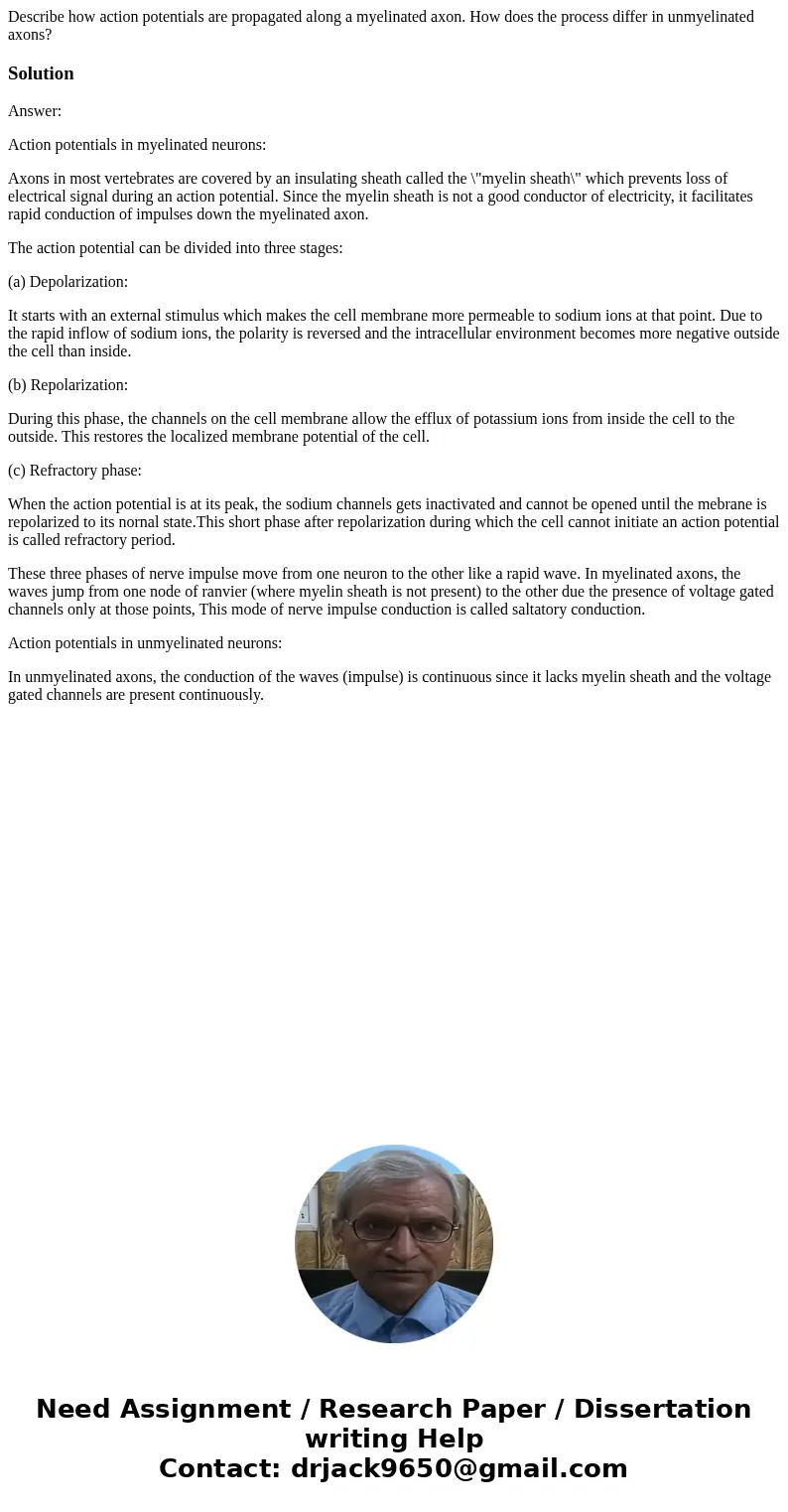Describe how action potentials are propagated along a myelin
Describe how action potentials are propagated along a myelinated axon. How does the process differ in unmyelinated axons?
Solution
Answer:
Action potentials in myelinated neurons:
Axons in most vertebrates are covered by an insulating sheath called the \"myelin sheath\" which prevents loss of electrical signal during an action potential. Since the myelin sheath is not a good conductor of electricity, it facilitates rapid conduction of impulses down the myelinated axon.
The action potential can be divided into three stages:
(a) Depolarization:
It starts with an external stimulus which makes the cell membrane more permeable to sodium ions at that point. Due to the rapid inflow of sodium ions, the polarity is reversed and the intracellular environment becomes more negative outside the cell than inside.
(b) Repolarization:
During this phase, the channels on the cell membrane allow the efflux of potassium ions from inside the cell to the outside. This restores the localized membrane potential of the cell.
(c) Refractory phase:
When the action potential is at its peak, the sodium channels gets inactivated and cannot be opened until the mebrane is repolarized to its nornal state.This short phase after repolarization during which the cell cannot initiate an action potential is called refractory period.
These three phases of nerve impulse move from one neuron to the other like a rapid wave. In myelinated axons, the waves jump from one node of ranvier (where myelin sheath is not present) to the other due the presence of voltage gated channels only at those points, This mode of nerve impulse conduction is called saltatory conduction.
Action potentials in unmyelinated neurons:
In unmyelinated axons, the conduction of the waves (impulse) is continuous since it lacks myelin sheath and the voltage gated channels are present continuously.

 Homework Sourse
Homework Sourse